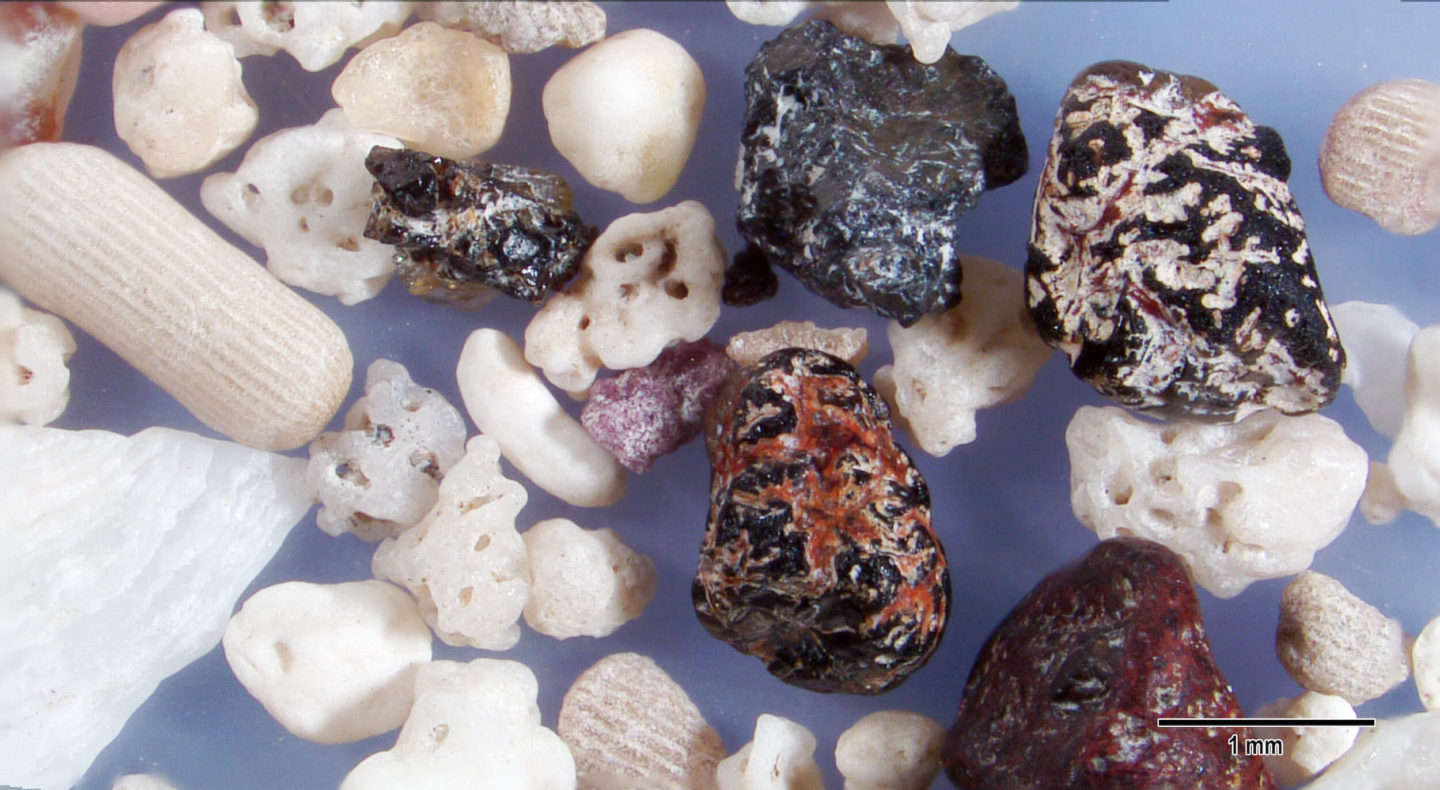
The sand at Kaloko-Honokohau National Park beach in Hawaii boasts a vibrant mixture of both marine and volcanic elements. The sand consists of dark red and black porphyritic volcanic grains, mixed with sea urchin spine fragments, smooth white marine shell fragments with some showing evidence of predation, and mollusk and foram fragments. The presence of dark volcanic rocks adds to the distinctive beauty of the sand on this beach.


The lower magnification shows the mixture of marine and terrestrial sand grains present on the Kaloko-Homokphau beach. Elongated white, tan and pink sea urchin spines with parallel grooves are present at the left of this view along with a tan and red banded gastropod shell. The cross section of a sea urchin spine is present in the center just to the upper right of a triangular mollusk shard. The higher magnification shows the detail of a tan and white foram as well as the detail of the dark porphyritic sand grain fragments.
Geographic Overview
The Kaloko-Honokohau beach shows a mixture of white sand representing marine shell fragments along with dark volcanic rocks. A sea lion is sleeping on the white shore in the center of one of the beach images.

Sand Location
See where this sand sample was collected on Google Maps.

Virtual Sand Tour
Explore an interactive map of Kaloko-Honokohau beach on Google Earth.
Sand Gallery

This low magnification view show the colorful array of mixed marine and volcanic sand grains. Included here are sea urchin spine pieces with parallel grooves, a tan mollusk fragment in the upper center, red and white stripes mollusk fragment in the center to the right of a porphyritic volcanic grain. A round white foram is present next to several marine shell fragments with predator drill holes at the 2 o’clock edge of the image.

A mixture of dark and white sand grains present a colorful view of the diverse sand at Kaloko-Honokohau beach. Dark red and black porphyritic volcanic grains and varied colored sea urchin spine fragments with parallel lines are present along with smooth white shards of marine shell, some with holes showing evidence of predation.

This view is dominated by the colorful porphyritic igneous sand grains. A white sea urchin spine with parallel groove is seen at the left edge. Also present are white fragments of marine shell fragment showing drill holes as evidence of predation.

Details of this high magnification of a reddish-tan striped gastropod shell show tiny holes of very early predation. The white and off-white grains are fragments of mollusk shells while the dark grains are examples of porphyritic volcanic sand.

A fragment of black sea urchin spine is present in the center to the immediate left of a mottled red and black volcanic sand grain. The white fragment with tiny holes located just below the centrally located mottled volcanic grain is a piece of a calcified foram. Three white conical gastropod shells are to the left and above the black sea urchin spine.



